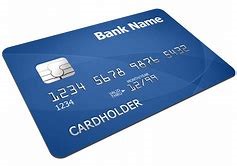Understanding Credit Card Interest Rates
[ad_1]
Albert Einstein famously said, “Compound interest is the greatest mathematical discovery of all time.” Now, ask yourself, “Do I want this powerful force working for me or against me?” If you own a credit card and carry a balance month to month, you’re likely experiencing the negative side of this force — compounding interest — working against you.
In this article, we’ll delve into how credit card interest rates work, why understanding them is vital, and how small changes in rates can significantly impact your financial future. By gaining this knowledge, you’ll be empowered to pay off your credit card debt and start saving so you can harness the positive power of compounding interest.
What Are Credit Card Interest Rates and How Do They Work?
Credit card interest rates are expressed as an Annual Percentage Rate (APR), representing the yearly cost of borrowing money. However, credit card interest isn’t simple; it’s compounded. This means you pay interest not only on your principal balance but also on any unpaid interest from previous months.
For example, if your card charges 2% interest monthly, you’re not paying a flat 24% annually. Due to compounding, the effective annual rate is 26.82%. Most credit card companies calculate interest monthly to increase profits, often without the consumer realizing how much extra they’re paying.
The Impact of Compounded Interest
Compounded interest amplifies the amount you owe over time. Let’s say you carry a $1,000 balance on a card with a 15% APR. Here’s how your debt grows over five years if you make no payments:
- Year 1: $1,150
- Year 2: $1,322.50
- Year 3: $1,520.88
- Year 4: $1,749.01
- Year 5: $2,011.36
In just five years, your debt doubles. By year ten, it would quadruple. This highlights the devastating effect of compounded interest when it works against you.
The Difference a Few Percentage Points Can Make
Even a small reduction in APR can translate into significant savings. Using the same $1,000 balance scenario, let’s compare a 15% APR to a 12% APR over five years:
- Year 1: $1,120
- Year 2: $1,254.40
- Year 3: $1,404.93
- Year 4: $1,573.52
- Year 5: $1,762.34
With a 12% APR, your total balance after five years is $1,762, saving you nearly $250 compared to the 15% APR. Over time, these savings compound, demonstrating the importance of seeking lower rates.
Why Understanding Credit Card Interest Rates Matters
Failing to grasp how credit card interest works can lead to years of debt and unnecessary payments. However, understanding this system can help you:
- Pay Off Debt Faster: Focus on high-interest cards first to minimize compounding.
- Save Money: Avoid carrying a balance or negotiate for a lower APR.
- Build Wealth: Redirect savings toward investments or a financial safety net.
Tips to Avoid the Trap of Compounding Interest
Pay Your Balance in Full
Avoid interest charges entirely by paying off your balance each month.
Make More Than the Minimum Payment
Minimum payments barely cover the interest. Paying more reduces your balance faster.
Negotiate a Lower APR
Call your credit card issuer and request a rate reduction, especially if you have a good payment history.
Transfer Balances
Consider moving your balance to a card with a 0% introductory APR. Be mindful of transfer fees.
Conclusion: Put Compound Interest to Work for You
Credit card interest is a double-edged sword. While it can work against you when carrying a balance, it can also work for you when you save or invest. By understanding how credit card interest rates and compounding work, you can make smarter financial decisions that benefit you and your family in the long run.
Make paying off high-interest debt a priority and start saving to harness the positive power of compound interest. Your financial future depends on it.
FAQs About Credit Card Interest Rates
1. What is APR on a credit card?
APR stands for Annual Percentage Rate, the yearly cost of borrowing money on your card.
2. How does compounding interest work?
Compounding means interest is calculated on both the principal and previously accrued interest.
3. Can I avoid credit card interest altogether?
Yes, by paying your balance in full each month.
4. Is it worth switching to a card with a lower APR?
Absolutely. Even a small reduction in APR can save you hundreds of dollars over time.
5. How can I negotiate a lower APR?
Contact your credit card company, highlight your good payment history, and request a lower rate.
By following these strategies, you can take control of your credit card debt and achieve long-term financial stability.
[ad_2]
by Kevin Erickson
